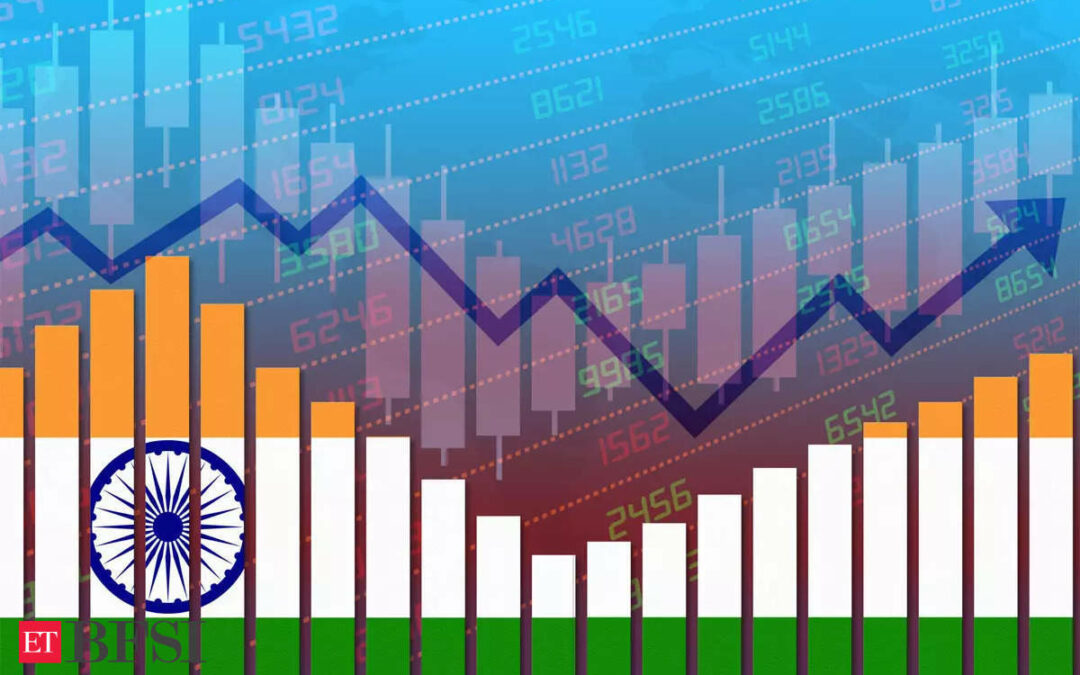~Ritesh and Shrishti Sharma
The Reserve Bank of India (RBI) concluded its first Monetary Policy meeting for 2024 on February 8th, choosing continuity by keeping the repo rate unchanged at 6.5%. With an inflation projection of 5.4%, the central bank sets the tone for the economic landscape. Notably, the RBI’s optimistic real GDP projection of 7.2% for Q1 2024-25 reflects confidence in India’s economic trajectory. In this article, we unravel the multifaceted aspects of India’s economy, examining key indicators such as GST revenue, inflation trends, unemployment rates, industrial production, financial markets, trade merchandise, UPI payments, and foreign exchange reserves. These insights provide a nuanced perspective on the nation’s economic pulse as it navigates the complexities of early 2024.
Goods and Services Tax (GST)
In January 2024, the gross GST revenue surged to ₹1,72,129 crore, indicating a substantial 10.4% Year-on-Year (Y-o-Y) increase compared to the ₹155,922 crore collected in January 2023. This remarkable achievement marks the second-highest monthly collection to date and the third consecutive month in the fiscal year with collections exceeding ₹1.70 lakh crore. Noteworthy is the government’s allocation of ₹43,552 crore to CGST and ₹37,257 crore to SGST from the IGST collection.
The significance of GST as a crucial indicator of economic health is underscored by its role in facilitating indirect tax reforms. Over the cumulative period from April 2023 to January 2024, the gross GST collection demonstrated a robust Y-o-Y growth of 11.6%, reaching ₹16.69 lakh crore. This noteworthy performance surpassed the ₹14.96 lakh crore collected during the corresponding period in the previous fiscal year (April 2022-January 2023).
Inflation
The all India Consumer Price Index (CPI) or retail inflation eased to 5.10 per cent in the month of January. The data released by the Ministry of Statistics and Programme Implementation (MoSPI) showed that the inflation rate has declined from 5.69 per cent in December 2023 which was a four-month high figure.
The retail inflation remains within the tolerance range of 2 to 6 per cent set by the RBI.
The Wholesale Price Index (WPI) also witnessed a moderation. The statistics released by the Ministry of Commerce and Industry noted the rate of inflation standing at 0.27 per cent in January 2024 as opposed to 0.73 per cent of December 2023.
Unemployment
In a positive turn of events, the unemployment rate in India, among individuals aged 15 years and above, witnessed a sharp decline to 6.8% in January 2024. This marks the lowest recorded rate in 16 months, signifying a significant drop of nearly 1.9 percentage points from December’s unemployment rate of 8.7%. Moreover, it represents a noteworthy decrease from the average unemployment rate of 9% during October-December 2023.
Source: Centre for Monitoring Indian Economy
Industrial Production
Since the statistics for the month of January 2024 for industrial production will be released in March, the latest data released by the MoSPI for December 2023 registered an uptick in Industrial Production.
The numbers released by MoSPI for India’s Index of Industrial Production (IIP) increased by 3.8 per cent in December ‘23.
The Quick Estimates of Index of Industrial Production with base 2011-12 stands at 151.5. The Indices of Industrial Production for the Mining, Manufacturing and Electricity sectors for the month of December 2023 stand at 139.4, 150.6 and 181.6 respectively.
As per Use-based classification, the indices stand at 151.7 for Primary Goods, 103.3 for Capital Goods, 159.3 for Intermediate Goods and 177.9 for Infrastructure or Construction Goods.
Furthermore, for the month of December 2023, the indices for Consumer durables and Consumer non-durables stand at 114.0 and 178.0, respectively.
Purchasing Manager’s Index
The HSBC India Manufacturing Purchasing Managers’ Index (PMI) for January 2024, though slightly revised lower to 56.5 from the initial reading of 56.9, demonstrated a notable improvement compared to December’s figure of 54.9. This marked the strongest growth in the factory sector since September, with both output and new orders experiencing the most substantial expansion in four months. Additionally, new export orders continued to rise, reflecting a positive trend in global demand.
Buying activity in the manufacturing sector was robust, increasing at the fastest rate in four months and significantly surpassing its long-run average. Employment remained unchanged, accompanied by a moderate accumulation in outstanding business. Despite the moderate nature of input price inflation, it reached a three-month peak, standing among the weakest in 3-1/2 years. Meanwhile, the rate of charge inflation accelerated to a three-month high, aligning with its long-run average.
On a positive note, sentiment in the manufacturing sector strengthened to a 13-month high. This optimistic outlook was attributed to new product inquiries, diversification efforts, strong demand, and effective publicity initiatives.
Source: HSBC India Manufacturing Purchasing Managers’ Index (PMI)
FII DII
The Indian share market benchmarks, Sensex and Nifty opened the new year with a bang. However, there were instances of profit booking and market correction throughout the month of January.
The net investments made by the foreign portfolio investors (FPIs) in the month of January 2024 stood at Rs 6593.34 crores, as per the data from the National Securities Depository Limited (NSDL).
The net purchase/sales by the domestic institutional investors (DIIs) amounted to Rs 26,743 crores.
The drastic decline in the FPI figures could be attributed to the fall of HDFC Bank shares which had a significant amount of investments by the foreign institutional investors (FIIs). HDFC bank’s and other companies’ shares fell due to poor register in their Q3 results.
Trade Merchandise
India’s merchandise exports displayed a notable growth of 3.12%, reaching USD 36.92 Billion, compared to USD 35.80 Billion in January 2023. The key contributors to this export surge encompassed diverse sectors such as Petroleum Products, Engineering Goods, Iron Ore, Electronic Goods, Drugs & Pharmaceuticals, among others.
Furthermore, the overall trade deficit exhibited a substantial improvement, registering a 37.11% decline from USD 111.99 Billion in April-January 2022-23 to USD 70.43 Billion in April-January 2023-24. Additionally, the merchandise trade deficit demonstrated a commendable 9.66% reduction, decreasing from USD 229.37 Billion in April-January 2022-23 to USD 207.20 Billion in April-January 2023-24.
Source: Press Information Bureau
UPI Payments System
The UPI recorded a substantial transaction volume of 12,203.02, indicative of the widespread adoption and usage of this digital payment platform, with a total of 550 banks live. Notably, the total transaction value amounted to a significant INR 18,41,083.97.
The data suggests an increase from the values in December 2023.
Source: NPCI
Foreign Exchange Reserves
India’s foreign exchange reserves increased by $5.73 billion to $622.46 billion for the week ended February 2, as per the Reserve Bank of India. The foreign currency assets (FCAs) witnessed a sharp growth of $5.18 bn, as per the RBI’s Weekly Statistical Supplement.
The Gold reserves grew by USD 608 million to USD 48.088 billion and the Special Drawing Rights (SDRs) were down by $58 mn to $18.19 bn, for the week ending February 2. India’s reserve position with the International Monetary Fund (IMF) remained unchanged at $4.86 billion. India’s forex reserves had reached an all-time high of $645 bn in October 2021.











